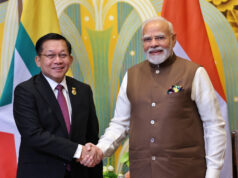A little over two days since Russia withdrew from the Black Sea Grain deal, that allowed the export of over 30 million tonnes of grain from Ukraine, politics took over.
“So the result of Russia’s action today — weaponising food, using it as a tool, as a weapon in its war against Ukraine — will be to make food harder to come by in places that desperately need it, and have prices rise,” warned US Secretary of State Anthony Blinken. “We’re already seeing the market react to this as prices are going up.”
Russia’s response: “During the year the Black Sea Initiative was in force, the Kiev regime did not hesitate to commit provocations and attacks on Russian civilian and military sites under the cover of the humanitarian sea corridor and shipping. In fact, the ports under Kiev’s control and the safe corridor opened by Russia for the Ukrainian grain exports have been used for perpetrating terrorist attacks in violation of the spirit and letter of the Black Sea Initiative.”
Moscow also rejected Blinken’s charge of “weaponising food”, pointing out “a total of 32.8 million tonnes of cargo were exported, of which more than 70 percent (26.3 million tonnes) was shipped to countries with high and higher than average income, including the EU. The low-income countries, notably Ethiopia, Yemen, Afghanistan, Sudan, Yemen and Somalia, received less than 3 percent, or 922,092 tonnes.”
Economist Biswajit Dhar of Jawaharlal Nehru University does not believe a food crisis is around the corner simply because the deal has collapsed. The biggest focus in the grain deal, he says, will be on wheat. Ukraine’s share in global wheat trade had declined from 7.4% to 3.7% between 2021 and 2022 this gap was being filled by other countries. Australia, which was exporting 5% in 2020 had now gone up to 14% in 2022. Exports from other countries and regions such as the EU had also gone up.
So that’s good news. But he underscored the issue of affordability. “We don’t know the prices at which Ukraine was selling grain to the poorer countries and one expects that they will be lower than that of the EU and Australia. In terms of availability, there will not be a major impact because is being made up by other countries but in terms of affordability, there may be an issue.”
Climate change is the other imponderable, with the El Nino effect hitting production in major wheat-producing nations such as China and India. Agriwatch.com, an Indian firm studying the agricultural business, estimated that India’s total wheat output for 2023 would be 102 million tonnes in contrast to the Centre’s earlier estimate of 112 million tonnes. This reported shortfall, along with the repeated insistence of Indian millers that the government relax current import controls on wheat, could impact not just India but the world food market.
“If India signals that it is importing there will be an understanding in the world food market that large quantities of wheat will be imported by the country which could drive up prices. This is where speculators will come into play which will drive up prices even higher,” argues Dhar.
For now, there are no signs of India relaxing controls on wheat imports. But further down the road, uncertainty rules. Russia has indicated it is open to returning to the grain deal if its demands are met: resumption of ammonia exports from Russia to Odessa in Ukraine, relief from Western sanctions on payments, logistics and shipping insurance and the Russian agricultural bank being reconnected to the SWIFT network. For any of this to happen it will take time.
Traveller, bibliophile and wordsmith with a yen for international relations. A journalist and budding author of short fiction, life is a daily struggle to uncover the latest breaking story while attempting to be Hemingway in the self-same time. Focussed especially on Europe and West Asia, discussing Brexit, the Iran crisis and all matters related is a passion that endures to this day. Believes firmly that life without the written word is a life best not lived. That’s me, Ashwin Ahmad.




